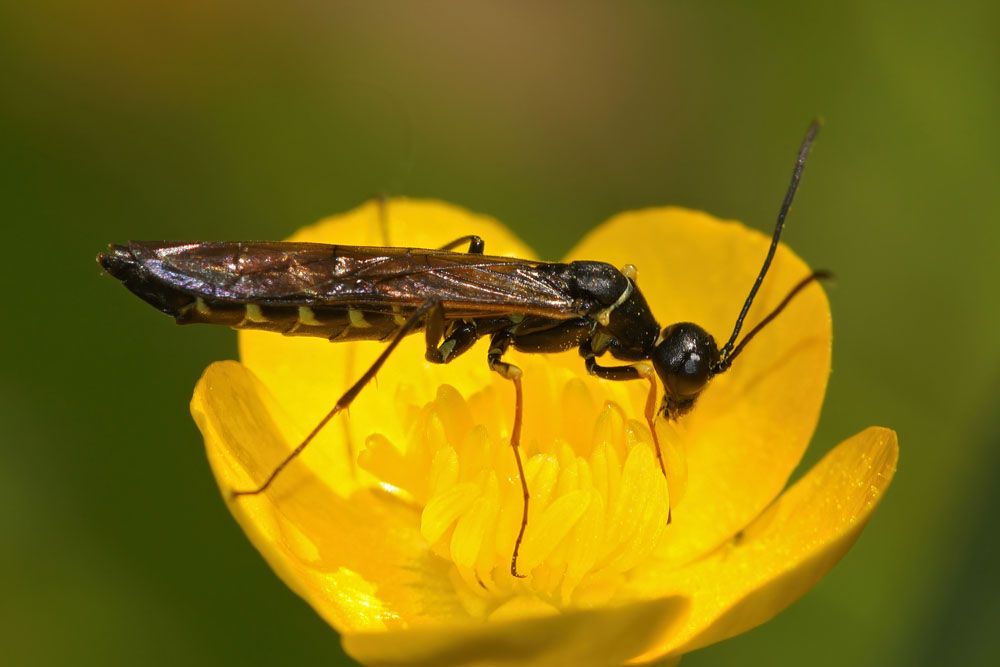
Sawflies
Sawflies (Caliroa cerasi)
In the landscape, various sawfly species are significant pests. Sawfly larvae that look like slugs eat on leaves and skeletonise them, leaving just a vein framework. We’ll talk about sawflies in this article.
What are sawflies?
Sawflies (Caliroa cerasi), commonly known as cherry or pear slugs, can be found throughout the United States and Canada. Mountain ash, hawthorn, cotoneaster, cherry, plum, and pear trees are prevalent pests, with quince and shadbush thrown in for good measure. When populations are high enough, whole trees can be defoliated.
Identification:
Wasps and bees have a kinship with sawflies. The saw-like ovipositor (egg-laying mechanism) of mature females gives them their name. Adult sawflies are non-stinging wasp-like insects with tiny bodies and sturdy body. Young larvae are greenish-black, elongated, slender, and slug-like (about half an inch long). Pear sawfly larvae look like green-orange caterpillars when they’re entirely grown. The adult is black, and the yellow four-winged non-stinging wasp (sawfly) is rarely seen (1/5 inch length).
Life cycle:
The winter is spent in a cocoon, buried under the dirt. The adults emerge in late spring, just after the trees have fully leafed out, and lay their eggs in the leaves. Depending on the climate, they might take a week or more to hatch. The larval stage takes less than a month to complete, and pupation takes place in the soil. Adult slugs emerge in late July and August, laying eggs for the next generation. This generation is known to do the most damage, particularly to young trees, which they may entirely defoliate. When the second generation of larvae reaches full maturity, they are buried and remain larvae until the following spring, when they pupate.
Damage of Sawflies:
Plant-eating larvae of sawfly wasps. In terms of look and harm, sawfly wasp larvae are similar to caterpillars. Many sawflies are plant pests that deplete plant leaves in a visible to devastating manner. Sawflies have unique host plants; each species of sawfly feeds on a distinct type of plant.
Control:
To assist limit the overwintering population; cultivate trees and shrubs in the early spring and again in the fall.
- Slugs may be washed off leaves with the Bug Blaster’s powerful stream of water, and larvae can be treated with Safer® Soap.
- For long-term protection, use food-grade Diatomaceous Earth. DE kills insects by scoring their outer layer when they crawl over the fine powder, made up of microscopic fossilized aquatic creatures that look like shattered glass under a microscope. This product contains no harmful chemicals.
- AzaMax includes azadirachtin, the active element in neem oil that is effective against insects. This concentrated organic pesticide has many mechanisms of action, making insect resistance extremely hard to acquire. It is also non-toxic to native bees and other beneficial insects.
